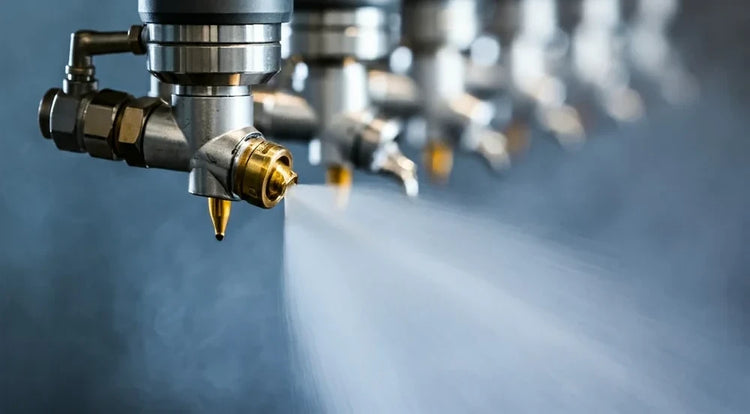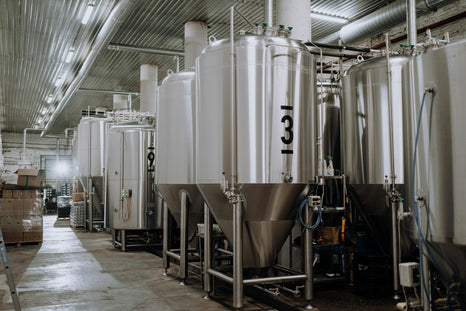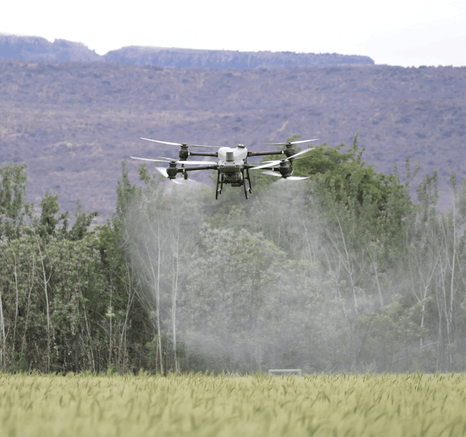Spray nozzles are essential tools across numerous industries, playing vital roles in cleaning, cooling, coating, lubrication, and more. Choosing the right nozzle for your application hinges on understanding the factors that influence performance, notably drop size and spray pattern. This guide will delve into these aspects and empower you to make informed decisions.
Factors Affecting Drop Size
A combination of factors determines the size of the droplets produced by a spray nozzle:
- Liquid Properties: The sprayed liquid's viscosity (thickness) and surface tension influence drop formation. Thicker liquids tend to form larger drops, while liquids with high surface tension resist atomization, leading to larger droplets.
- Nozzle Capacity (Flow Rate): The higher the flow rate of liquid through the nozzle (measured in gpm or l/min), the larger the droplets produced. Higher flow rates generally produce larger drops.
- Spraying Pressure: Increased pressure typically results in smaller droplets due to greater atomization of the liquid stream as it exits the nozzle.
- Spray Angle: The angle at which the liquid is sprayed can influence both drop size and distribution. Wider spray angles often lead to smaller droplets due to the increased spread and dispersion of the liquid.
Spray Patterns and Their Applications
Different spray patterns are designed for specific purposes:
- Air Atomizing: Produces the finest mist with the smallest droplet sizes, ideal for humidification, cooling, and lubrication applications.
- Fine Spray: Creates a narrow cone of small to medium droplets, commonly used for cleaning, rinsing, and chemical injection.
- Hollow Cone: Generates a ring-shaped pattern with medium to large droplets, suitable for dust suppression, gas cooling, and fire protection.
- Flat Fan: Produces a flat, even sheet of liquid with small to medium droplets, often employed for cleaning, coating, and agricultural spraying.
- Full Cone: Creates a solid cone of medium to large droplets, commonly used for washing, rinsing, and foam applications.
Drop Size Table
The following table provides a reference for drop size (Volume Median Diameter or VMD) in microns for different spray patterns, pressures, and capacities:
| Spray Pattern Type | 10 psi (0.7 bar) | 40 psi (2.8 bar) | 100 psi (7 bar) |
| Capacity (gpm) | Capacity (l/min) | VMD (microns) | |
| Air Atomizing | 0.005 | 0.02 | 20 |
| Fine Spray | 0.22 | 0.83 | 375 |
| Hollow Cone | 0.05 | 0.19 | 360 |
| Flat Fan | 0.05 | 0.19 | 260 |
| Full Cone | 0.1 | 0.38 | 1140 |
Note: These values can vary based on specific nozzle design and operating conditions.
Drop Size Distribution (ASTM E799-03)
The ASTM E799-03 standard's analysis of droplet size distribution within a spray provides actionable insights for optimizing spray performance in many industries. This information empowers you to make informed decisions and enhance your spraying processes.
NozzlePro: Your Spray Nozzle Partner
At NozzlePro, we share your commitment to quality and performance. We offer high-quality nozzles for diverse industries, along with expert guidance to ensure you make the best decisions. Our intuitive Nozzle Search tool simplifies the selection process, and our commitment to fast shipping and exceptional customer support gives you the confidence that you're in good hands.
Contact NozzlePro today to explore our comprehensive selection of spray nozzles and discover how we can help you optimize your spraying processes.












